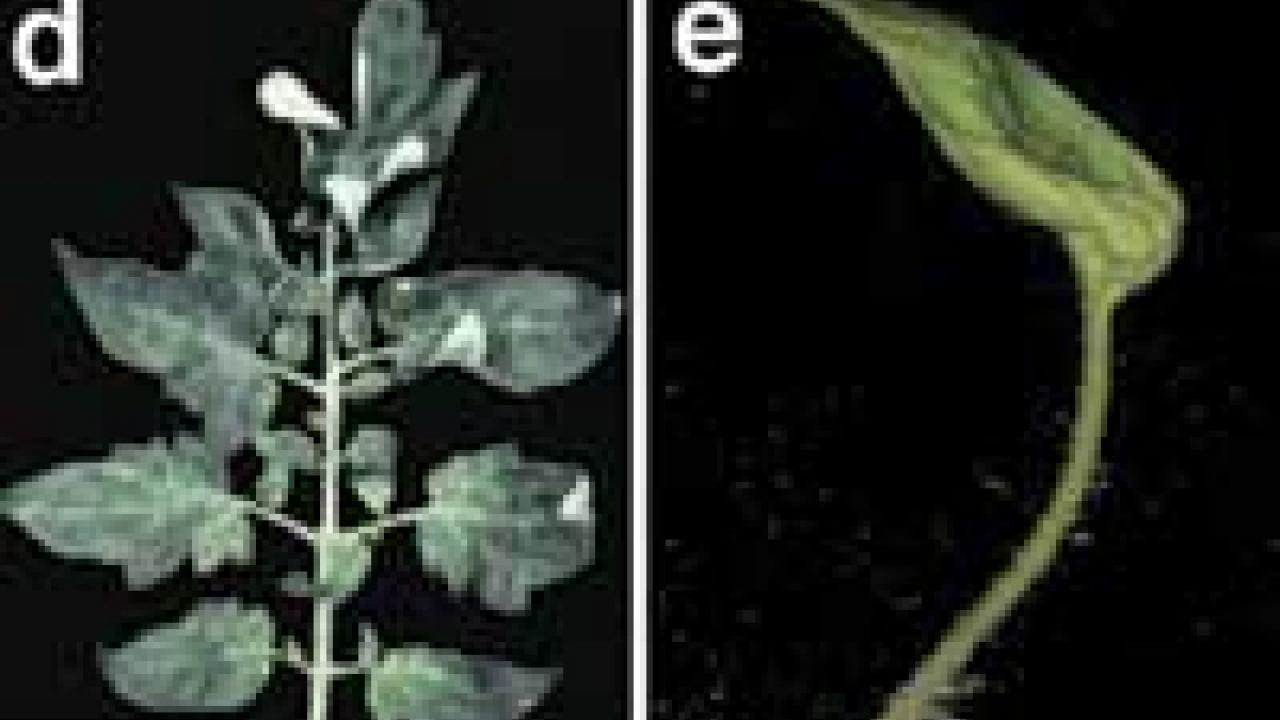A single gene, called PHANTASTICA (PHAN), controls whether a plant makes feathery leaves like a tomato or umbrella-like leaves like Oxalis. The same mechanism is shared by a wide group of flowering plants.
"It's a very surprising finding, that modifying one gene in the tomato alters the leaf from one form to another," said Neelima Sinha, a professor of plant biology at UC Davis who is senior author on the paper.
Plant leaves fall into two main groups: simple, single-blade leaves and compound leaves with multiple leaflets. Compound leaves have either a series of alternate leaflets on each side of a stem, like a tomato, or leaflets arrayed in a circle around a point at the end of the stalk.
Sinha and graduate student Minsung Kim from UC Davis, with Sheila McCormick from the U.S. Department of Agriculture's Plant Gene Expression Center in Albany, Calif., and Marja Timmermans from the Cold Spring Harbor Laboratory in New York, created tomato plants genetically manipulated so that PHAN was turned down or turned off.
Low-PHAN tomato plants made palmate, umbrella-like leaves or needles with no leaflets at all. In plants with normal leaves, PHAN was switched on throughout the upper surface of the leaf. In plants with palmate leaves, PHAN expression was reduced to the tip of the leaf. Plants with needle-shaped leaves showed no PHAN expression at all.
The results showed that when PHAN is switched on in part of the leaf, it creates an area where leaflets can form. The size and shape of this domain determines the shape of the leaf.
Sinha and colleagues found similar patterns of PHAN gene expression and leaf shape in live specimens of other plants from the UC Davis Botanical Conservatory and over 500 dried plants from the UC Davis Herbarium, showing that the same mechanism is used to control leaf shape even in distantly related flowering plants. That suggests that there may be a limited number of ways to change the shape of a leaf.
The conservatory and the herbarium were "incredibly valuable" for this kind of work, Sinha said. "We can look at thousands of specimens in the herbarium. It's an amazing resource."
The paper is published in the July 24 issue of the journal Nature.
Media Resources
Andy Fell, Research news (emphasis: biological and physical sciences, and engineering), 530-752-4533, ahfell@ucdavis.edu
Neelima Sinha, Plant Biology, (530) 754-8441, nrsinha@ucdavis.edu
